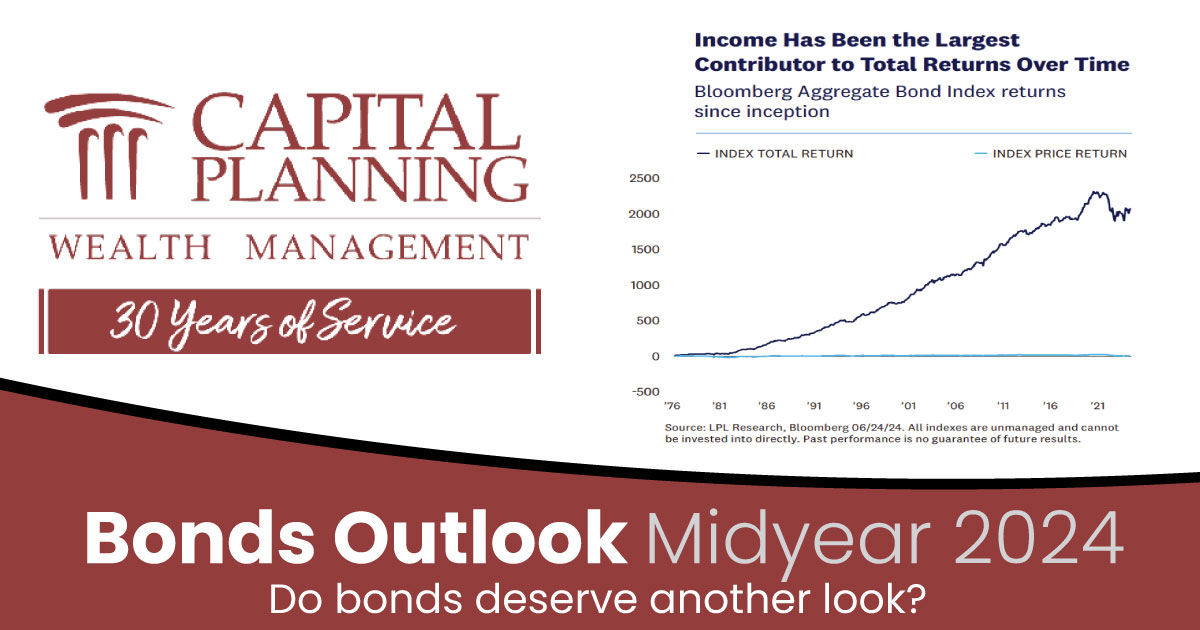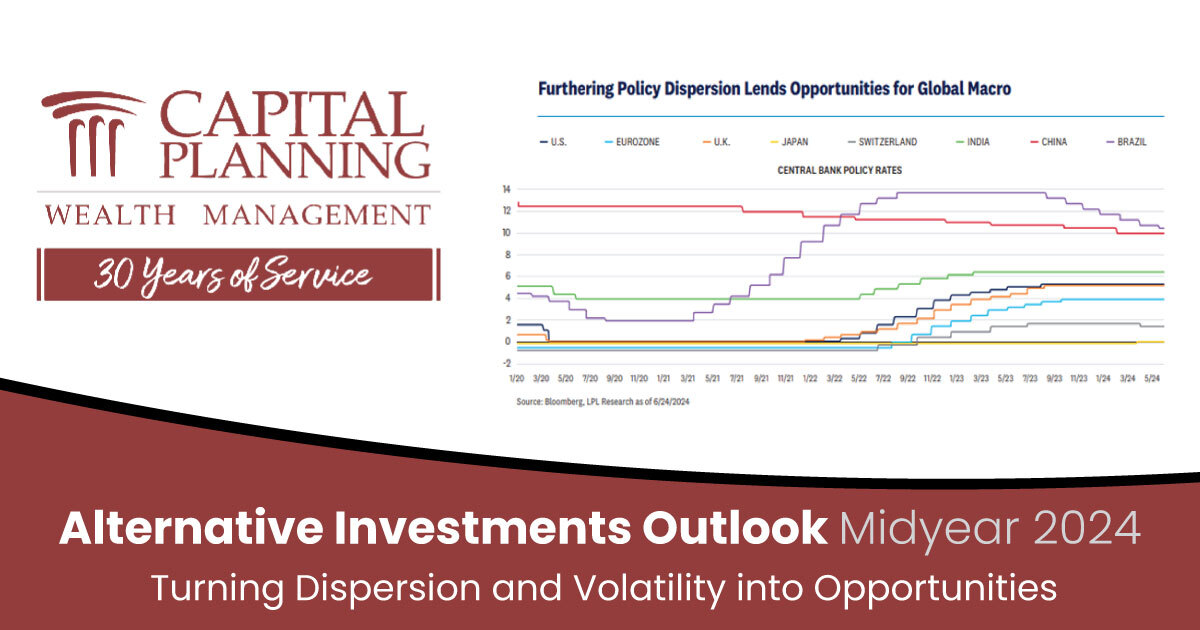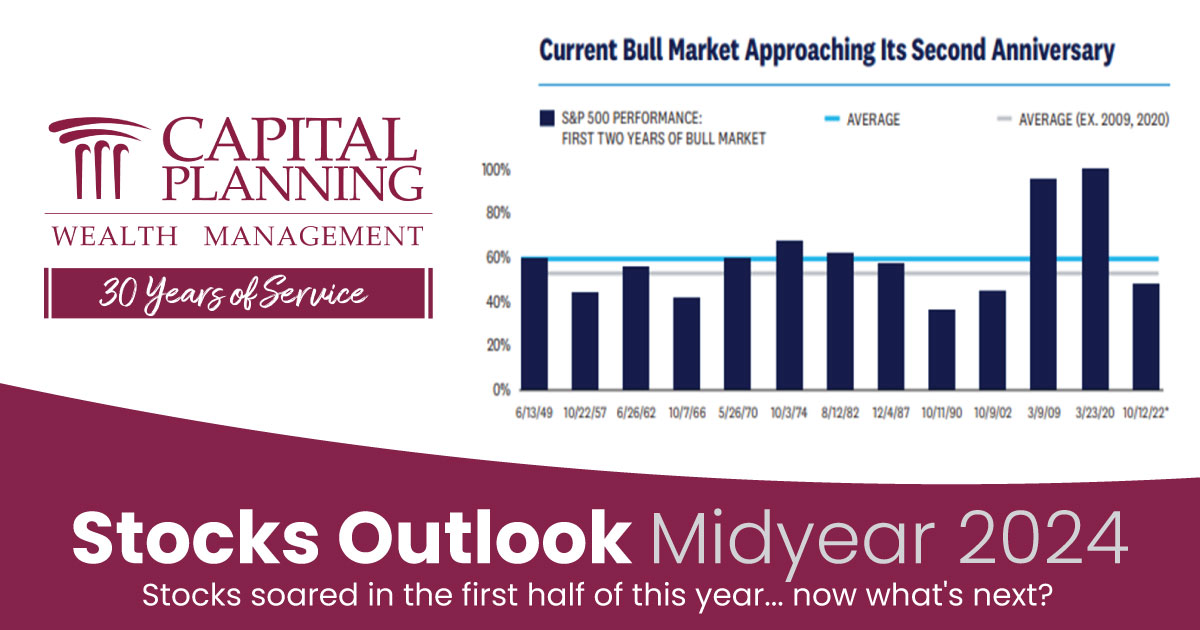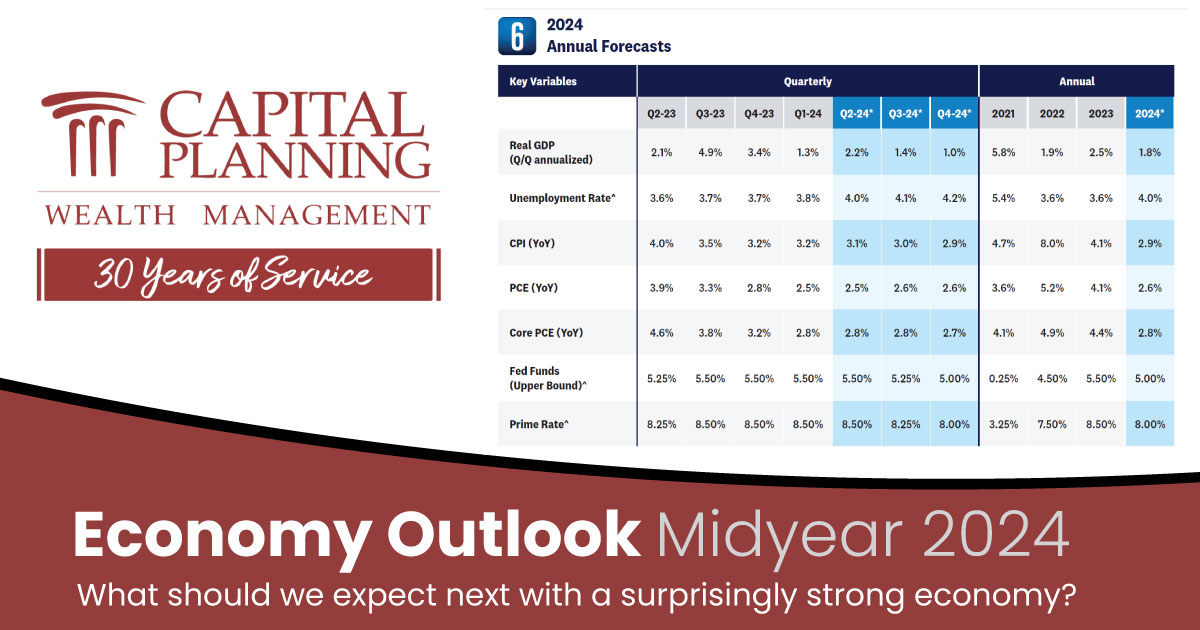Market pricing for Fed rate cuts has been volatile this year, which has meant bond prices have been volatile as well. As mentioned in the economic section, we expect the Fed to cut rates this year once or possibly twice, with more rate cuts likely coming in 2025. But while markets continue to wait for rate cuts, a lingering question remains: How low will the Fed be able to take the fed funds rate absent a financial crisis? The answer to that question has major ramifications on the overarching shape of the U.S. Treasury yield curve and, by extension, the ability for longer-maturity Treasury yields to fall meaningfully from current levels during this Fed rate cutting cycle.
The U.S. Treasury yield curve has been inverted since 2022 — currently the longest yield curve inversion in history. When the yield curve is inverted, shorter maturity Treasury yields are higher than longer-maturity Treasury yields. This is not the normal shape of the yield curve. In normal times, the yield curve is upward-sloping, meaning longer-maturity Treasury yields are higher than shorter-maturity Treasury yields, which makes sense since longer-maturity Treasury securities carry more risk as interest rates can fluctuate more over time and investors want to get paid more to take on that additional risk.
Given the inverted yield curve, in order to get back to normal, one of two things could happen: short rates could fall more than long rates (bull steepening) or long rates could climb more than short rates (bear steepening). Historically, once the Fed starts to cut rates, the yield curve normalizes by bull steepening, which is a good thing for fixed income investors. In this current environment though, where the economy has been able to mostly shrug off higher interest rates, the Fed may not need to take the fed funds rate back down to very low levels, which means longer-maturity Treasury yields may not fall much from current levels.
Current market pricing suggests the Fed will only take the fed funds rate back to around 4% or so before stopping its rate-cutting campaign. Absent an economy that slows more than we expect, the 4% fed funds rate will keep longer-maturity yields from falling meaningfully from current levels. Historically, the Fed has followed market pricing for the determination of the neutral rate. Since 2011, markets have generally assumed the neutral rate would drift lower over time, but that seemingly changed after the COVID-19 pandemic. Since bottoming close to zero, markets have repriced the neutral rate higher over the last few years. The question remains: Will the Fed follow suit and raise its estimation of neutral? If so, that likely means interest rates across all maturities are set to be higher than they were over the past decade.
Now, as we’ve seen this year, market pricing for the Fed’s reaction function has been volatile. That said, we still expect the 10-year Treasury yield to end the year in the 3.75% to 4.25% range, as a moderately slowing economy and sticky inflation likely lead to only a gradual reduction in interest rates over the next two years.
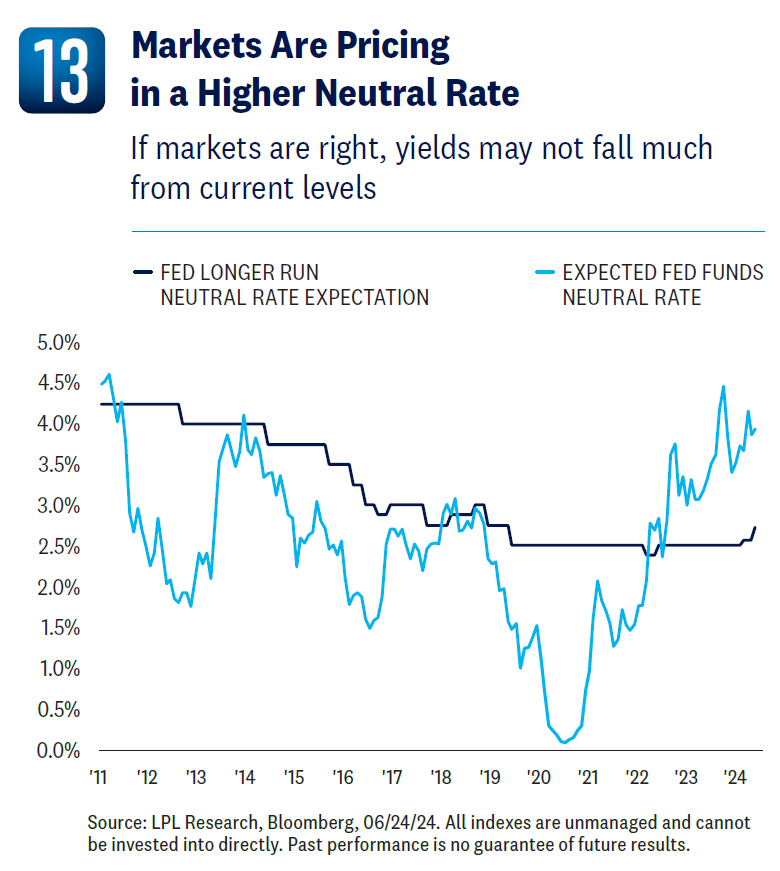
Don’t Forget About Income
The first half of the year was a challenging environment for a lot of fixed income markets, especially higher-quality markets. With the Fed seemingly unlikely to lower interest rates until after the summer months (at the earliest), the “higher for longer” narrative has kept a lid on any sort of bond market rally. And while falling interest rates help provide price appreciation in this higher-for-longer environment, fixed income investors are likely better served by focusing on income opportunities, which has been the traditional goal of fixed income investors.
Fixed income instruments are fundamentally different than other financial instruments. Bonds are financial obligations that are contractually obligated to pay periodic coupons and return principal at or near par at the maturity of the bond. That is, absent of defaults, there is a certainty with bonds that you don’t get from many other financial instruments. And because starting yields take into consideration the underlying price of the bond as well as the required coupon payments, starting yields are the best predictor of future returns.
For many financial markets, the primary driver of total returns is price appreciation. You buy a stock, for example, and total returns are largely predicated on the price of that stock going higher (though dividends play a role). For bonds, it’s different. Most of the time, bonds are bought at or near par, and the return is driven by the income component. In fact, since the inception of the Bloomberg Aggregate Bond Index, over 90% of total returns have come from the income component with the remainder coming from price appreciation. ³ Moreover, using just the near 40-year period of falling interest rates (1981 to 2017), research has shown that only about 25% of the annualized returns came from price appreciation, with the overwhelming majority of returns coming from interest income. So despite what has been called the great bond bull market due to falling interest rates, it was the high starting coupon rates that were the primary driver of returns.
In today’s fixed income environment and after the backup in bond yields that we’ve seen over the last few years, we’re back to, historically, more normal interest rate levels. As such, it is unlikely we’re going to see a large decline in bond yields (absent a financial crisis or other “black swan” type event), so total returns for fixed income investors are likely going to be dominated by interest income. While the optionality of price appreciation remains, fixed income returns have historically been predicated on income and have correlated highly with starting yields. And with starting yields still among the highest levels in decades, the income component within fixed income is as attractive as it’s been in a long time.
Right now, investors can build a high-quality fixed income portfolio of U.S. Treasury securities, AAA-rated Agency mortgage-backed securities (MBS), and short-maturity investment grade corporates that can generate attractive income. Investors don’t have to “reach for yield” anymore by taking on a lot of risk to meet their income needs. And for those investors concerned about still higher yields, consider laddered portfolios and individual bonds held to maturity to take advantage of these higher yields. We think the current environment is ripe with income opportunities that, when combined with equities, can help reduce overall levels of portfolio volatility and position investors better for longer-term success.
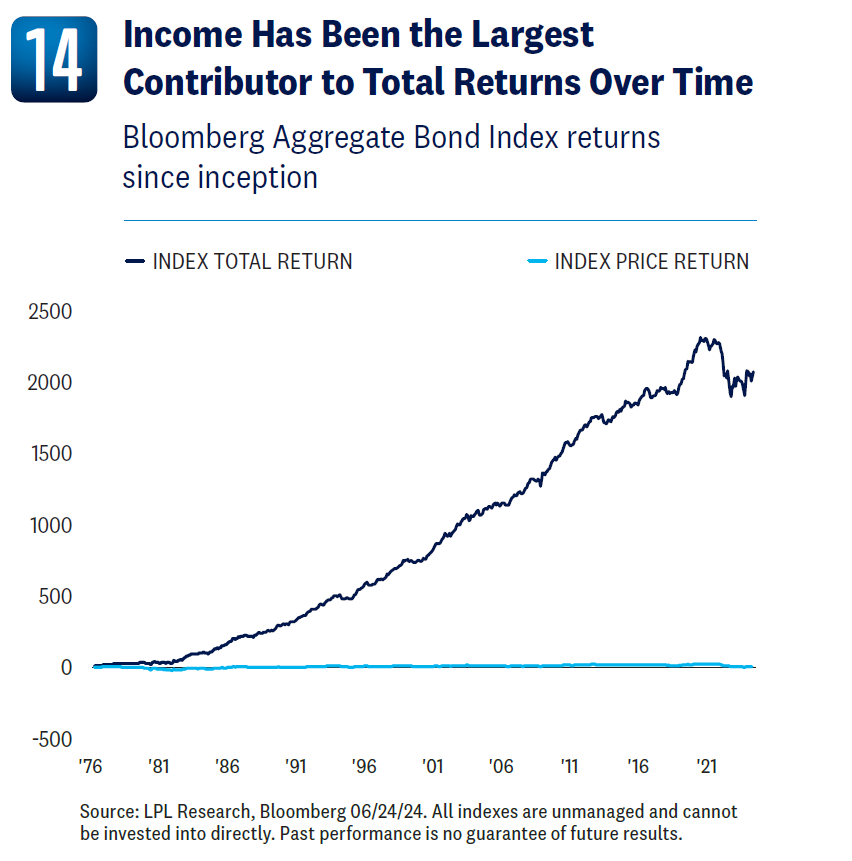
Fixed Income: Like Cash but Better
After a decade of cash yields that were close to zero, the Fed’s aggressive rate-hiking campaign has pushed cash rates up, and investors have taken advantage by parking nearly $6 trillion in cash accounts. And while cash yields are attractive, another attractive attribute for cash is the low risks associated with cash. Cash has done a great job in recent years helping investors preserve their portfolios from market turbulence. That was especially true in 2022, when both stocks and bonds experienced large drawdowns. But with Fed interest rate hikes likely behind us, cash may not be as important of an asset class to portfolios as it was recently.
And we know those cash rates aren’t going to last forever. Just as the aggressive rate-hiking cycle took Treasury yields higher, interestrate cuts will take all cash rates lower. However, with bond yields still elevated and likely to stay around current levels, investors can extend the maturity of their excess cash holdings by locking in current bond yields (not too far out on the curve, though). Locking into high-quality, intermediate-term fixed income can provide consistent cash flow and desirable income levels for years to come, regardless of what lies around the corner.
Moreover, there is an optionality that you get from bonds that you don’t get from cash. While current yields for bonds and cash are similar, bonds offer portfolio preservation and potential price appreciation if an unexpected event negatively impacts the economy that you don’t get from cash. Additionally, over the past 40 years (ending April 2024), bonds have averaged a 6.1% annual return versus about 3.5% for cash. And bonds have been consistent outperformers. From January 1986 to April 2024, bonds had a better 5-year return in 95% of the rolling 5-year returns. In those few instances where cash did better, it only outperformed by 0.38% on average. So, with cash rates likely to fall as the Fed cuts rates, bonds have done a better job than cash at helping investors grow their assets over the long term [Fig 15].
While we certainly think cash is a legitimate asset class again, unless investors have short-term income needs, they may be better served by reducing some of their excess cash holdings and by extending the maturity profile of their fixed income portfolio to lock in these higher yields for longer. Bond funds and ETFs that track the Bloomberg Aggregate Index, along with separately managed accounts and laddered portfolios, all represent attractive options that will allow investors to take advantage of these higher rates before they disappear.
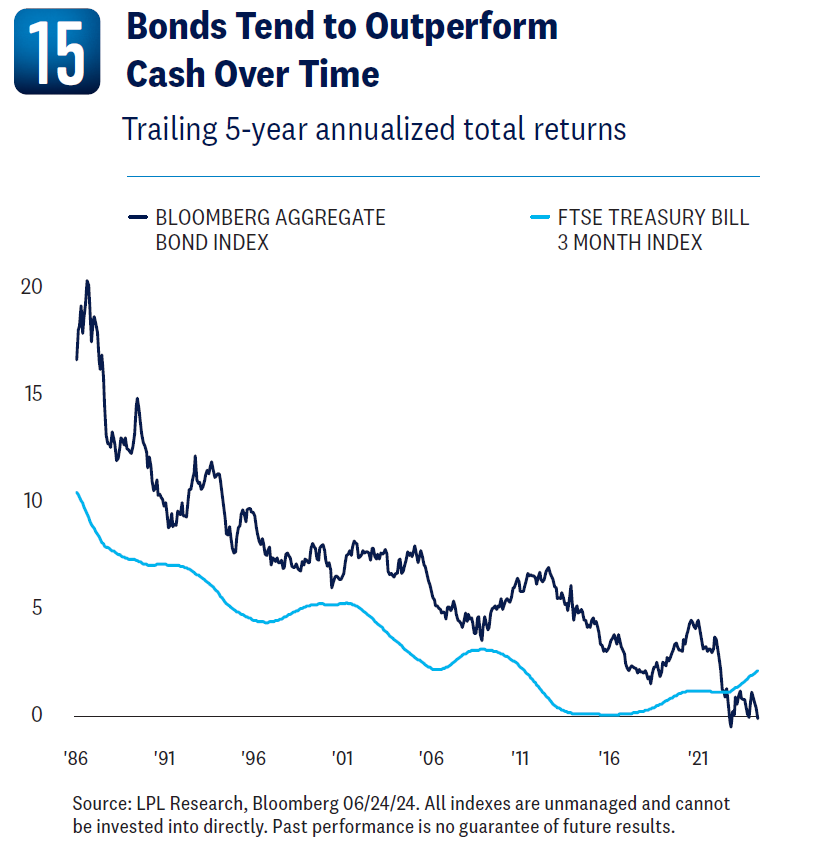
Fixed Income Matters Again
The move higher in Treasury yields over the past few years has been unrelenting, with intermediate and longer-term Treasury yields bearing the brunt of the more recent moves. The Fed is expected to start to reduce interest rates later this year, which should provide relief to fixed income investors. However, with the Treasury yield curve still inverted, it’s possible that we don’t get the kind of reaction from longer-maturity securities that we’ve seen in the past.
The Treasury Department is still expected to issue a record amount of Treasury securities to fund budget deficits, and with the Bank of Japan (BOJ) slowly ending its aggressively loose monetary policies in 2024, we could continue to see upward pressure on yields. However, while supply/demand dynamics can influence prices in the near term, the long-term direction of yields is based on expected Fed policy. That doesn’t mean rates are going to fall dramatically from current levels though, and that is fine for the longer-term prospects for fixed income investors since coupon, and not price appreciation, has historically been the largest component of total returns.
With yields back to levels last seen over a decade ago, we think bonds are an attractive asset class again. There are three primary reasons to own fixed income: diversification, liquidity, and income. And with the recent increase in yields, fixed income is providing income again.
The Bottom Line:
The focus for fixed income investors should shift back to the traditional benefit of bonds: income generation. Current high starting yields offer attractive risk-adjusted returns, even without significant price appreciation. Additionally, bonds can help reduce overall portfolio volatility compared to stocks. With the Fed likely to begin cutting rates in the second half of 2024, investors should consider using bonds to replace some cash holdings. By moving into high quality fixed income, investors can lock in these attractive yields for longer and fortify their overall portfolios.
The opinions, statements and forecasts presented herein are general information only and are not intended to provide specific investment advice or recommendations for any individual. It does not take into account the specific investment objectives, tax and financial condition, or particular needs of any specific person. There is no assurance that the strategies or techniques discussed are suitable for all investors or will be successful. To determine which investment(s) may be appropriate for you, please consult your financial professional prior to investing.
Any forward-looking statements including the economic forecasts herein may not develop as predicted and are subject to change based on future market and other conditions. All performance referenced is historical and is no guarantee of future results.
References to markets, asset classes, and sectors are generally regarding the corresponding market index. Indexes are unmanaged statistical composites and cannot be invested into directly. Index performance is not indicative of the performance of any investment and does not reflect fees, expenses, or sales charges. All performance referenced is historical and is no guarantee of future results.
Alternative investments may not be suitable for all investors and should be considered as an investment for the risk capital portion of the investor’s portfolio.
The strategies employed in the management of alternative investments may accelerate the velocity of potential losses. Hedge funds are private investment partnerships that pool funds. Hedge funds use varied and complex proprietary strategies and invest or trade in complex products, including listed and unlisted derivatives. Managed futures are speculative, use significant leverage, may carry substantial charges, and should only be considered suitable for the risk capital portion of an investor’s portfolio. Private credit is non-publicly traded debt instruments created by non-bank entities, such as private credit funds or business development companies (BDCs), to fund private businesses.
Event driven strategies, such as merger arbitrage, consist of buying shares of the target company in a proposed merger and fully or partially hedging the exposure to the acquirer by shorting the stock of the acquiring company or other means. This strategy involves significant risk as events may not occur as planned and disruptions to a planned merger may result in significant loss to a hedged position. Precious metal investing involves greater fluctuation and potential for losses. Any company names noted herein are for educational purposes only and not an indication of trading intent or a solicitation of their products or services.
LPL Financial doesn’t provide research on individual equities. All index data from FactSet. All information is believed to be from reliable sources; however, LPL Financial makes no representation as to its completeness or accuracy.
GENERAL RISK DISCLOSURES
Investing involves risks including possible loss of principal. No investment strategy or risk management technique can guarantee return or eliminate risk in all market environments. There is no guarantee that a diversified portfolio will enhance overall returns or outperform a nondiversified portfolio. Diversification does not protect against market risk. Investing in foreign and emerging markets debt or securities involves special additional risks. These risks include, but are not limited to, currency risk, geopolitical risk, and risk associated with varying accounting standards. Investing in emerging markets may accentuate these risks.
This research material has been prepared by LPL Financial LLC. Tracking #585057 (Exp. 07/25)

